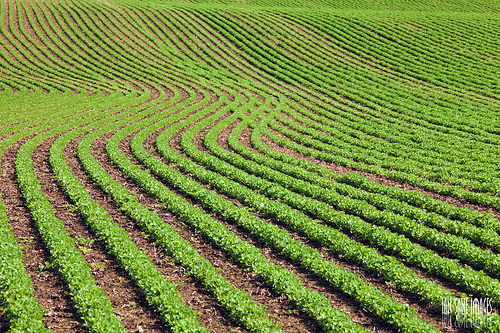Agriculture and food production/demand
Demand for food is set to continue as the global human population rises from 6.5 billion in 2006 to between 8-12 billion by the end of the century (Goldstone 2010). There will be many more mouths to feed yet little more (perhaps a reduced amount) productive land will be available.
Of the world's total land area of 148.9 million km2 much is not suitable or available for agriculture.
| Land use | Percentage of land area |
|---|---|
| Arable land | 10% |
| Permanent crops | 1% |
| Meadows and pastures | 24% |
| Forest and woodland | 31% |
| Supports little or no vegetation | 34% |
Examples of the land surface that supports little or no vegetation include Antarctica, deserts, mine sites, and urban areas.
Nearly all of the world's productive land is already exploited (Kendall and Pimentel 1994). In Asia 80% of all Arable land is already under cultivation.
The solution for agriculture can only be an increasing move away from traditional agriculture. There must be a higher level of industrialisation and intensification on existing land to increase yields (Lal 2008). The consequences of such new approaches/methods will be agriculture that requires large inputs of fertilisers, and herbicides and pesticides that depend on large scale irrigation.
The result will be reduced biodiversity worldwide and as this system consumes large quantities of fossil fuel (Cleveland 1995) both in growing the food and in delivering it to consumers who may be thousands of miles away the consequences for global warming will not be good. Further human-based increases in CO2 emissions seem inevitable.

Image by Ian Sane from Flickr. Used under Creative Commons Attribution licence